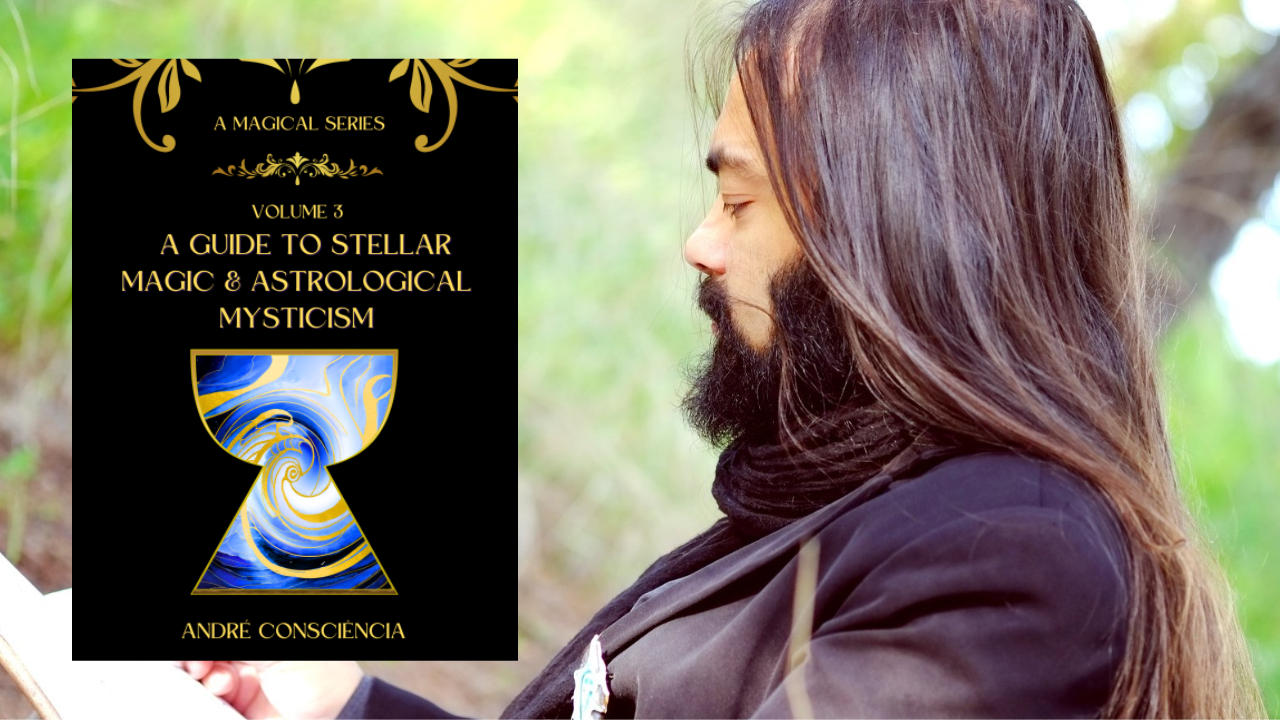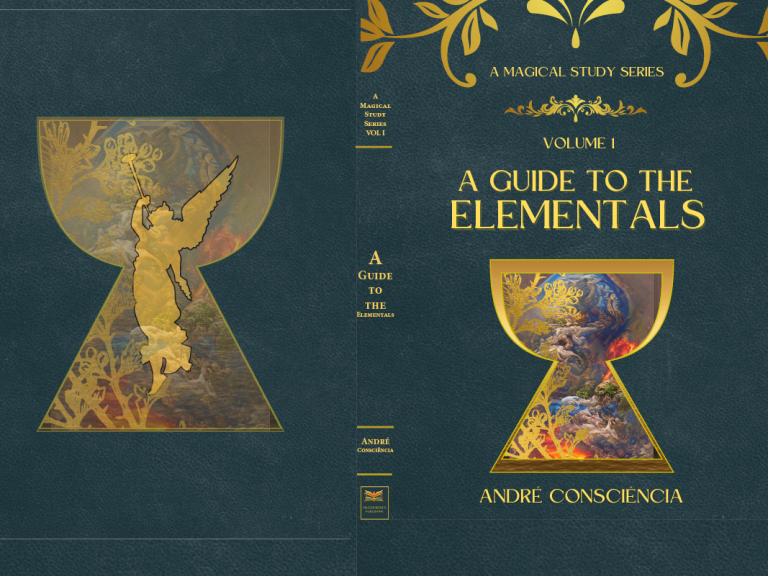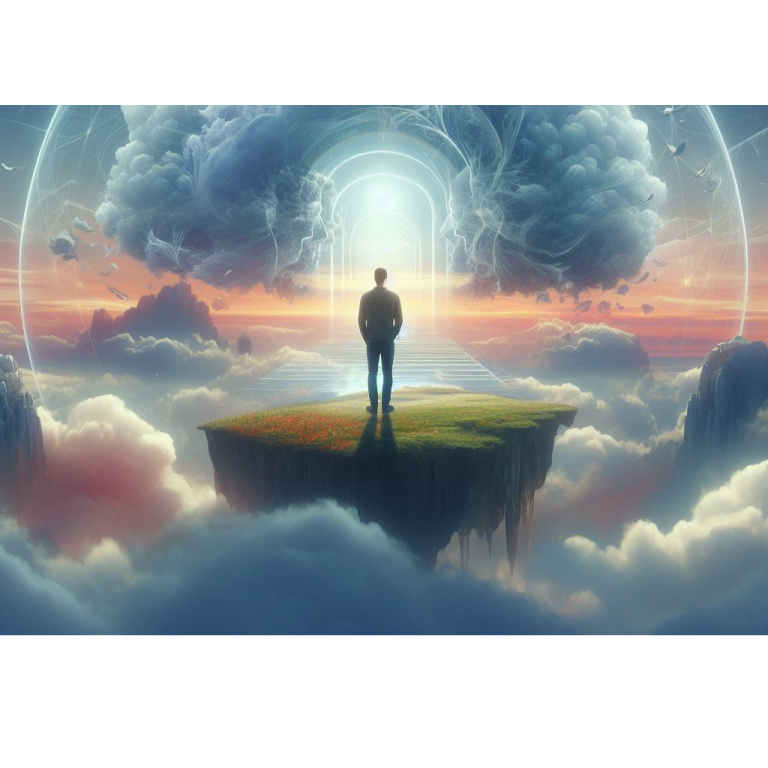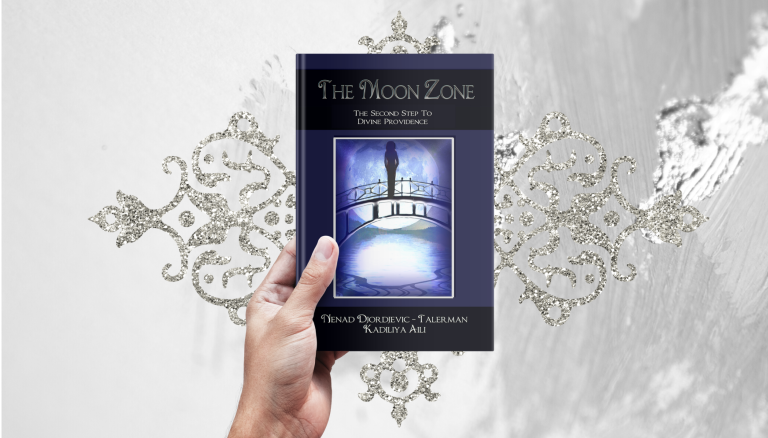Interview with Andre Consciencia: Insights on ‘A Guide to Stellar Magic and Astrological Mysticism
Introduction
We have just released ‘A Guide to Stellar Magic and Astrological Mysticism‘ by Andre Consciencia and we know there will be questions from those already familiar with ‘A Magical Study Series‘ and those who are entirely new. So, in this interview Andre answers some of the question that may have been on your mind. We hope this sheds even more light on how special not just this title is but the entire series.
Interview
I. Foundations and Vision
- A Comprehensive Lens
In A Guide to Stellar Magic & Astrological Mysticism, you reference—and synthesize—astrological traditions from Mesopotamia, Egypt, China, and beyond. Some might say it’s “strange” or overly ambitious to include so many. What inspired you to unify so many systems into one overarching framework?
I believe I am not synthetising the multiple astrological traditions, although history itself has done this for the great majority of them. The question in the beginning of the book is: “Is there, then, not a unified and true beyond doubt form of astrology?” You cannot answer a question like this within the subject of the question, astrology, it would be like asking who created the universe, which is the same as asking who could be beyond the universe. At the same time, to get to the bottom of the question, one must study all the components involved, and so there is a study of the various astrological traditions throughout the world and throughout time.
Even most traditions having been historically synthetized into a single working corpus, there are very rich forms of astrology that hardly fit or don’t fit at all, like the Mayan astrology, one of the most functional, detailed, complex and down-to-earth forms. However, since I am not exactly building an astrological Frankenstein, the differences and even similarities matter little. We are searching for the method that makes all these systems functional, we are searching for their fuel. This is a book of magic and mysticism, and by illuminating astrological traditions what it will enlighten about is magic and mysticism.
Now, consider that astrology is simply a science or art of conjoining time as quantity with manifestation as quality, symbol with power; it is about the magic of weaving spiders and crafting destiny and dreams. When Aleister Crowley added a “k” to magic, he was trying to distinguish the philosophy from the stage spectacle. But examine the philosophy, and you will understand what theatre meant to Ancient Greece: the actors became illusions, so they could become something greater than themselves (the gods, the universal principles in movement). All magic(k) is illusionism. It works with Maya, and is capable of influencing our dualistic and illusory life or reality, and fixating and stabilising some illusions, by playing with polarity and games of equilibrium. Astrology, then, is likely the greatest book on magic, but it has disguised itself as something else. It is a programming language with which to build, but most are living inside the software and can’t see the forest from the trees.
- Bardon’s Ongoing Influence
Your background with Franz Bardon’s works (PME, KTQ, IIH) shines through in this new volume. Could you share how Bardon’s methodology shaped A Guide to Stellar Magic & Astrological Mysticism, particularly regarding astral and planetary exploration?
This is not an easy answer because it is not a partial one. I am under the impression everything that Bardon said about astrology is here but amplified, and what isn’t here is in A Guide to Sphere Quabbalah. My spinal bone as a practising magician comes from training Franz Bardon. Then, how did Bardon influence my astral and planetary exploration? By getting me to do it. I guess the influence is somehow omnipresent.
- Returning to the Earth’s Core
You emphasize the Earth’s molten center as a primary gateway to stellar realms. Many readers will find this unusual. Could you explain the deeper magical logic behind starting with the Earth’s core before venturing outward to cosmic planes?
The Earth is a cosmic plane. In astrology the planets are or at least were considered stars. And they are, in the astrological sense: they are celestial bodies. So is the Earth. And it is molten at its core, like any other star, and bursting with electromagnetic power. “Visita Interiora Terrae, Rectificando, Invenies Occultum Lapidem”, Vitriol dissolves all substances except gold. If you wish to understand the stars in the dark expanses, you must find the gold in the abysses of the Earth. If you wish to travel to the stars, you must yourself become in the image of their light, gold.
II. Mesopotamian and Ancient Roots
- Mantic Mesopotamia
You provide rich details on the Triad of Anu, Enlil, and Ea, and explain how ancient omens shaped early astrology. What drew you most powerfully to the Mesopotamian micro-zodiac, and how do you see it benefiting today’s practitioners?
Mesopotamia speaks close to my heart and memory. The micro-zodiac is a mere detail (although elaborate), but it helps the student have a mnemonic method for a deep astrological understanding of the signs, and it appears right at the beginning of the book. There is a practical exercise that combines the micro-zodiac with cosmic quabbalistic letters, so the mnemonics have a practical side now, and become a ritualistic and activated magical device, much like a magical computer. Let’s consider it a great warm up.
- Egyptian Star Religion
In your chapters on Egyptian astrology, you discuss the “Watchers” and planetary gods. How can modern magicians adapt these age-old star-lore practices without losing their historical richness?
If they practice modern astrology it will already include Ancient Egyptian astrology. It’s not so much that it lost historical richness, it is just that people do not know the history of what they practice and preach. This is something I believe this book can help with.
- Zoroastrian and Mazdean Cycles
You highlight Zoroastrian cosmic cycles and their emphasis on good vs. evil. In what ways do you integrate these moral or ethical dimensions into astrological magic?
Integrating moral and ethical dimensions into astrological magic is not up to me. In the book, I explain how it is already done and has always been in practice. The stars move orderly if the rites for good are accomplished. You see, when the Sun rises, it does not necessarily rise for the spirit.
III. The Stellar Approach in Practice
- Cosmic Letters & Quabbalah
You describe using Bardon’s cosmic letters alongside astrological signs and planetary intelligences. How do these letters facilitate a direct link between personal intention and macrocosmic forces?
The letters are the very macrocosmic creative forces. The intelligences are cosmic personalities and the astrological signs represent universal intentions. We become the missing link, and fill it.
- Working With Balachman
Balachman (27° Aries) appears as a key guide into “synthetic astrology.” Could you share how Balachman first “made contact” and why he’s central to evolving a magician’s stellar awareness?
Balachman first made contact for the creation of this book. I was reading Nenad Talerman’s work 360 Heads of the Earth Zone (First Step to Divine Providence) and when passing Balachman I spied the seal and domain, since he was one of the few heads I hadn’t met. Then that was it, Balachman was quite insistent. I didn’t like emphasizing astrology and didn’t feel like I knew enough about it. Balachman had a way to convince me.
However, saying Balachman is central to evolving a magician’s stellar awareness is not only wrong as it is dangerous. Balachman is peripheral, as any other intelligence. They are like rays to a star, not the center of the star.
- Ugirpon and Other Cosmic Teachers
Alongside Balachman, the book introduces other beings like Ugirpon. How do their teachings differ, and how can a practitioner discern which entity is most aligned with their development?
Balachman teaches astrology, and Ugirpon teaches astronomy. For complete training, they might refer to one another. Both can introduce the magician to many other intelligences. Balachman is better if you wish to understand the applied philosophy behind the cosmos, Ugirpon will teach you about the cosmos more via its animated life force.
- Extraplanetary Research Roadmap
Your appendices include a structured approach for venturing beyond familiar planetary zones—into extrasolar realms like Andromeda. What are some preparatory steps a magician must absolutely master before attempting these deeper cosmic travels?
It is a research roadmap, more than a structured approach for venturing out. Such a structure is given in the book, just not in the appendices. What is in the appendices is a challenge, so to speak, for the one venturing to analyze and make sense of these strange worlds, and bring something back that is useful to this world and eventually translatable, and that poses a logical system, even if the logic is alien. Also, I do not reach Andromeda here, I solve this by using the Moonsphere as a lab to examine Andromeda’s influence and astral blueprint. That is not to say we don’t travel, just the same, much beyond what is usually taught.
What must be mastered most of all is a non-dualistic awareness, all planetary spheres and light saturations up to Neptune, and to solve one’s conscience into its own peace and original nature. Obviously, you must also love the unknown much more than you fear death.
IV. Bridging Various Astrological Systems
- Defining Synthetic Astrology
You call your approach “synthetic” in places, weaving together sign-based astrology, planetary magic, and beyond. Could you clarify how you integrate the best of these diverse lineages—Vedic, Hellenistic, Chinese, Mayan—into a single workable method?
I do not. What I propose is to figure out what this single method that makes all lineages work is. I think I figured it out.
- Planetary vs. Stellar
You make distinctions among Earth Zone, lunar, planetary, and stellar operations. For practitioners who are used to “12 signs + 7 classical planets,” what’s the biggest conceptual leap they’ll have to make in embracing truly stellar magic?
The 12 signs and 7 classical planets are still there and they still form a map of the skies: they point to everything else. Yet, everything else is also there. Maybe the biggest conceptual leap here is in astrology truly meeting astronomy, which is the same as saying we can finally implement all astronomical discoveries into astrology, which is the original method of creating astrology anyway.
- Historical Thoroughness
In some sections, you point out that you include distant or lesser-known traditions (e.g., Druidic or Old Norse astrology) for thoroughness. How do these “minor” traditions add practical or symbolic depth for someone doing daily magical work?
I think it is a mistake to suggest these traditions are minor in any possible way. These traditions are oral, not lesser. Both can be supposed to have developed two of the most great astrological traditions. The Druids had their lore mostly based on beings that visited us from the stars, and were good navigators. The Old Norse people were one of the greatest people of navigators known in history. This indicates, beyond doubt, acute knowledge of the stars. What is more, the general spirituality of both cultures is magical by nature, and what there is on their magic, coupled with their mythology and finally their astrology, could easily fill a 400 pages book just as this one, dedicated to only one of them in terms of appliable stellar magic.
There is also something else to contemplate, and in which these smaller fragments of the book are central: when we look at how different cultures interpreted the stars, especially when there is little intercultural influence, we realize the stars have not only the cultural quality but a metaphysical quantity to them. We realize the quantitative power that emanates from the stars does not really change.
V. Experiential and Applied Techniques
- Practical Exercises
From your perspective, which single practice—such as evoking the Sun Sphere, Moon Sphere, or a certain cosmic letter—provides the most immediate shift in awareness for newcomers?
Immediate shift of awareness? Hm. Which has greater speed? This depends on the method, the practitioner, and the direction of the change in awareness. First, saying we evoke the Sun Sphere or the Moon Sphere is a little odd. We may evoke its light oscillation into the room or the triangle, if that is what you mean, or invoke the light oscillation unto ourselves. If a practitioner who has enough experience in doing this connects it to a ritual gesture that immediately does the job, then immediate is immediate. If a quabbalist is not so experienced the letters may take him longer, but if he is quite used to them, immediate is still immediate. Not the letters nor the gestures will provide any immediate shift of awareness to newcomers, since being newcomers we still need to practice.
- Mental Wandering to Planetary Spheres
Borrowing from Bardon’s mental wandering, you guide readers to contact cosmic beings. Could you outline a typical first encounter protocol that ensures safety, clarity, and genuine contact?
First encounters are never safe, clear, and often are not entirely genuine, just genuine enough. Although there is a problem in keeping with this “genuine contact” agenda, since it fact-checks something that isn’t factual on one side and puts to question one’s personal gnosis on the other, there are ways to understand effectiveness or lack of it. So when I say the contact is just genuine enough I mean to say there is an influence of a particular being in one’s own inner distractions there.
We can make it as safe as possible by mastering our assumption of the personal God first, and having a close contact with our guardian genius. For clarity, master vacancy of mind for one hour, one-pointed concentration for half an hour, observe your thoughts and register them without forgetting anything, practice passive communication as well until you start getting very good results and results that can be fact checked (yes, the results themselves can be fact-checked), and do it also with your own isolated subconscious so its uncalled for interference can be recognized and it loses the capacity to trick you. These measures will contribute to a more genuine contact.
- Astrology Beyond Personality
Many people see astrology as a natal chart reading. Your focus is more on direct manipulation of energies. How can someone move from “I read my horoscope” to “I shape my reality through cosmic alignments”?
By working the horoscope according to the soul mirror and the ennoblement of the soul. The book has this but also a more advanced practice, where you can understand and work with the hierarchy of beings in all ten spheres behind every one of your chart aspects. You can, then, by working with these beings and contacting new ones, start to change your natal chart accordingly and in the image of cosmic equilibrium. This will make you realize, as Giordano Bruno said, that changing the stars changes the Earth.
- Healing and Alchemy
You mention the interplay of cosmic forces with mineral, plant, and animal kingdoms. In practical terms, how might a magician use your system for healing or alchemical experiments that harness stellar vibrations?
By way of analogy and the magic of sympathy. It is quite a long book, and it is for such details that a book is needed to start with. I can say, for instance, that there is a system of healing and internal alchemy wholly connected to the beings of Jupiter, the signs of the zodiac, and the human body.
VI. Journeying Through the Book’s Key Sections
- Roadmap to the Andromeda Galaxy
In A Guide to Stellar Magic & Astrological Mysticism, you dedicate a section to Andromeda. Could you share any personal anecdote or vision from your own Andromeda work that highlights the unique benefits (or challenges) of going that far?
Unique benefits or challenges… To tell you the truth, I think we are often, at this level of depth, somehow beyond benefit and challenge. We are more in an existential realm as explorers. The Andromeda work is depicted in the book and it is not my place to repeat what is in the book but to shed light on the book from a different angle, to point my finger to the book, so to speak. Nema Andahadna saw that the Ma’atian Aeon was aligned with Andromeda, or passing through Andromeda’s alignment with the Milky Way. Sirius caught the current, and its blueprint could be worked on in the Moonzone that reflects our Sun. Others like Kenneth Grant, Frater Achad, Aion 131 (Denny Sargent) and myself have produced experiments that corroborate this theory. An Aeon means both a period in time as a specific logos or mode of processing the universe, and Ma’at is connected with justice, balance, truth, equilibrium and similar aspects. This is when we are no longer at odds with our own conscience, and the Judges of Saturn become the Lords (or Ladies) of Understanding. This is also when we can understand the innermost truths of each other and the moon (or Maya) no longer distorts our perceptions of other creatures and the cosmos. So if you want to evolve, tapping into this current is a good challenge. If you want long-standing magical equilibrium, here is a benefit to reap from that challenge.
- Moon-Earth Split
You write about bridging the gap between lunar influences and earthly reality, an overlooked dichotomy in many systems. Why is re-harmonizing the Moon-Earth relationship vital in your cosmic framework?
Until this is achieved, we can only explore the spheres as they exist in the Moonzone layer of the Universe. While factual reality and dream are perceived as separated, Mercury will remain corrupt, it will judge the dream and this trauma causes the split of duality. When the subjective reality of the moon and the objective reality of the earthzone cease and give place to reality in and of itself, then we take upon us the sensuous wings of Venus, and Mercury becomes glory and contemplation instead of intellectual judgement. Now when this happens, we shift to another solar system altogether.
- Training Sensory Imagination
You emphasize training imagination to “taste, sense, smell and hear” the stars. How does this differ from a typical astral-projection approach, and why do you consider it indispensable?
I have seen a lot of people mental-wandering and ending up in their own inner planes, unable to get to the shared astral space, wether they know it or not. This is because they did not make clairvoyance, clairsentience, and clairaudience (or general extrasensory abilities) their second or even first nature. They have just dipped their toes. This method forces the senses to awaken to the invisible world. Also, the senses approach the quantity of the stars directly through the body, while mental wandering will approach this through spiritual poetics, visionary experiences, metaphysical metaphors and so on.
VII. Integrating the Previous Volumes and Looking Ahead
- Tie-Ins with Prior Works
Readers of A Guide to Sphere Quabbalah or A Guide to the Elementals will see many references to elemental gates and cosmic letters. How do these earlier volumes pave the way for stellar operations in this book?
In multiple ways. We see the universe through the lens of the four elements, and even the stars (the zodiac) is divided between them. I have come so far as to show how the cosmic letters represent the four elements as well throughout the cosmos, beyond the earthzone. So, having built a tower whose base is the four elements and the upper floors are the spheres, a ladder cemented by the cosmic letters, we pierce the “stratosphere” of the solar system and venture to the stars beyond.
- From Elementals to Exoplanets
In your previous works, you dealt extensively with elementals. Here, you expand to exoplanets and star systems. How does working with elementals differ in scale or nuance from working with cosmic-level beings or phenomena?
I am not sure if we should measure the scale of our mystical experiences according to this platonic hierarchy. Working with an elemental can be as strong and intense, or more, than with a cosmic-level being. And why? Because, as previously stated, we see the universe through the four elements, and this means a major elemental is right in the eye of the hurricane, lending all powers to a cosmic being (whose existence is principle). This comes to be because a cosmic being, as a universal, is not really in time and space, and it manifests not as an experience except through the elements. This cosmic-level being is not to be confused with the material or astral creatures that exist throughout the cosmos, who, existing in the cosmos, are not entirely at a cosmic-level and exhibit various relative aspects.
- Ideal Sequence
Would you advise a new reader to start with your previous “A Guide to…” books before tackling stellar magic? Or can A Guide to Stellar Magic & Astrological Mysticism stand on its own as a starting point?
A Guide to Stellar Magic is a fine book to read if you have none of the other books. It does not depend on them to be understood. As strange as it eventually gets as it progresses, it is one of my favourite books in terms of theory, and a good portion of it can be considered academic esoterica. I think you will find nothing like this elsewhere and the content alone makes it a must-have. Regarding practice, it is mostly an advanced book. If you would depend on my own written training (written in books), you start at Through the Soul Mirror to the Sphere of the Sun. This is the real first book in my Falcon Books Publishing series, and it paves the way to A Guide to the Elementals (you can try with potential success to begin here, but it’s not really a beginner’s book). Although A Guide to the Elementals is the first in “A Magical Study Series”, the series is an idea of the publisher since these three books are in a different format from Through the Soul Mirror to the Sphere of the Sun.
A different option is to complete The Way of Abrahadabra or The Inner Gateways of LAM (Esoteric Pillars).
VIII. Reflection and Final Thoughts
- Personal Transformation
After delving so deeply into these advanced cosmic realms, have you noticed a corresponding shift in your everyday consciousness or worldview? In other words, how has your own life changed as a result of this research and practice?
Although writing this book was one of my favourite writing experiences, with the beings in contact with me while awake or dreaming in bed, these kinds of changes were unleashed while writing The Inner Gateways of LAM (Esoteric Pillars). This is the book I wrote immediately before A Guide to Stellar Magic, and it devised a wholly mystical method to explore the stars and extra-terrestrial contacts. When I finished, I was hesitant in publishing it. It seems I had tapped into something so out of this world, and that it was now living in the book, that publishing it could have unpredicted consequences.
Now, something interesting happened during my period of indecision. I felt I was going insane, fire and light (as a sort of radiation) constantly bombarding me by the tutelar entities of the book, and rightly so, because an oath had been made. After deciding to publish it, however, this fire and light became mine to channel at all times. A Guide to Stellar Magic adds the metaphysical component that was missing at The Inner Gateways of LAM, but upon the conclusion of Stellar Magic the main change in me is I stopped longing so much for that heart of mystery that has compelled me from birth to an extent that I had to constantly check for symptoms of melancholia. I realized the heart of the knowledge I have brought in my secret fire cannot be in the present stage of dual reality. This gave me peace and removed any remnants of uncertainty in my Silence.
- Advice for the Hesitant
Finally, if someone is intrigued by stellar magic but wonders if it’s too lofty or “strange,” what heartfelt encouragement or practical tip would you offer to help them take that first step?
Turn around and leave, never look back. It is much stranger than your fear can imagine.
- Value for Bardon Practitioners
For students deeply engaged in Franz Bardon’s system—particularly those working with Initiation into Hermetics (IIH), The Practice of Magical Evocation (PME), and The Key to the True Quabbalah (KTQ)—how does A Guide to Stellar Magic & Astrological Mysticism expand their understanding and practice? Does it bridge any gaps in Bardon’s original work?
I don’t care for gaps as usually understood. Books are works of art, even theoretical ones, and art has no gaps. This book draws mostly from PME’s astrological references. They are hints. They have camouflage. They are everywhere in the book, but the beings are dancing with their scintillating light, and the magical tools and apparatus fill the imagination. The whole system behind the book goes unnoticed, like a puppet show where the puppeteers remain hidden.
- Value for Astrology Students
For those who come from a more traditional astrology background—perhaps focusing on natal charts, transits, or horary astrology—what new dimensions or applications will they find in this book that go beyond standard astrological techniques?
You can keep focusing on natal charts, transits, horary astrology, it’s all in here. Now are you ready to use it as a time machine? What about using the stars to build an interstellar spaceship?
Further Information
Learn with Andre over on Perseus Arcane Academy
Enroll in his in-depth curriculum – The School of Visionary Hermeticism






